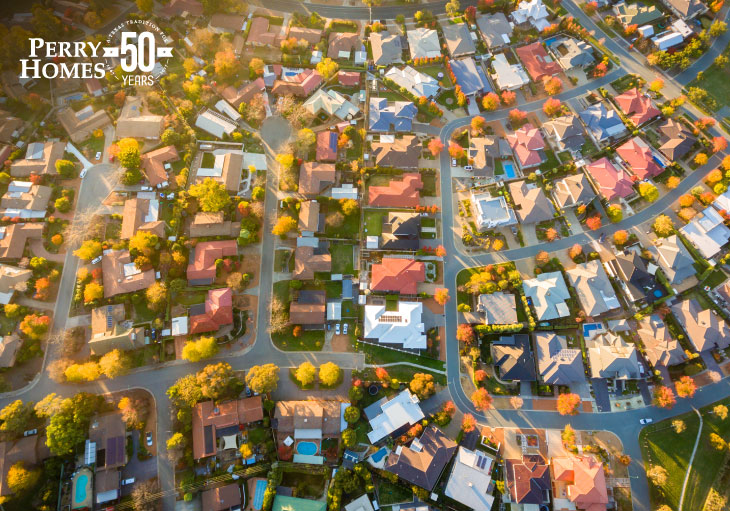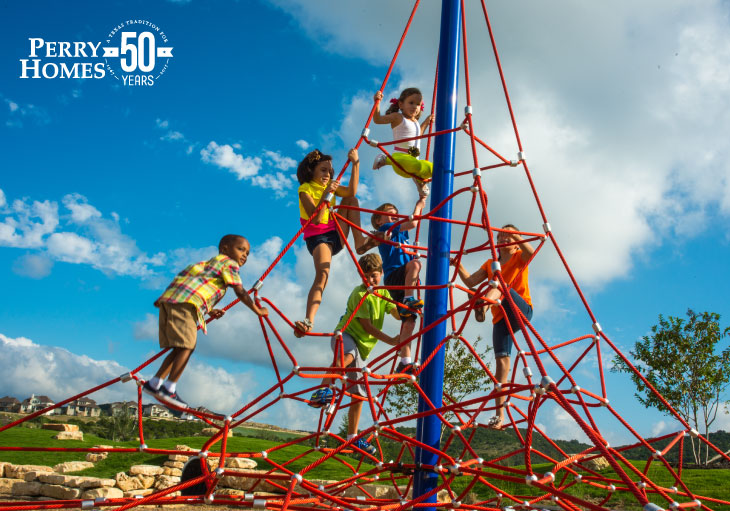The Advantages of Living in Master Planned Communities

The Advantages of Living in Master Planned Communities
September 1, 2017The next step in community living is already here—and evolving
As major U.S. cities continue to grow and develop, so has the need for organized and quality housing outside of urban traditional urban settings. That is why rethinking how we build communities became a necessity as early as the nineteenth century.
In 1869, Frederick Law Olmsted and Calvert Vaux designed and constructed Riverside, IL, one of the first master planned communities (MPCs), outside of Chicago. Its success, especially when compared to traditional urban sprawl, resulted in many others appearing in states like California, Texas and throughout the Mountain West.
Since then, this idea of suburban life has created a culture of its own, ranging from the everyday family mom to influencing portions of pop culture. But the core idea behind MPCs that Olmsted and Vaux envisioned remains: that homeowners could find homes that meet their needs outside of traditional city life without living in rural isolation.
Here are some more advantages to living in master planned communities.
Planned infrastructure
Details matter, a sentiment not lost on those who build planned communities.
Unlike most large cities, where roads and highways are based on independent systems, MPCs are designed all as one. That means everything from power and roads to schools and shopping areas are thought out with the homeowner in mind. This is especially true when it comes to traffic, which is drastically lessened, and pedestrian traffic. It is not uncommon to be able to walk or bike to nearby shopping thanks to well-lit roads and designated pathways.
Even more, MPCs are usually aligned with other major road systems, giving them easy access to work commutes or long-distance travel. For example, The Woodlands, a MPC in southeast Texas, is only a 30-minute drive from downtown Houston.

Amenities
Who does not like having perks, especially around where they live? One of the greatest advantages to living in MPCs are the multitude of built-in amenities like parks, security, pools, gyms and, in some cases, entire clubs and entertainment centers.
The best part is that many of these communities will specialize in particular amenities like golf courses. For instance, Aliana and Pomona, both located near Houston, have an abundance of green space and open areas, including entire trail systems, that are perfect for those seeking outdoor activity without sacrificing elements of urban living. (In case you are wondering, Aliana is one of the top-selling U.S. MPCs in 2016.)
And although not an amenity, per se, a growing number of master planned communities come with school systems. Places like The Ranches at Creekside and Sweetwater, located in Boerne, Texas and Austin, Texas, respectively, are nestled next to some of the best schools in the state, including Boerne Independent School District and Lake Travis Independent School District.
One of the best amenities of planned communities is their innate need to meet the changing needs of the people who live there, whether that is providing the latest and greatest technology or adding any number of additional features that meet the values of prospective buyers.
Many more choices
Compared to more urbanized areas where resold older homes are more common, MPCs provide many wide-open spaces for not just one but many new construction home builders to purchase plots and build their products.
How exactly does that benefit the homebuyer? Well, having multiple builders and communities to choose from provides buyers with many more options to meet their needs. That means more floorplans, amenities and other community factors to choose from. Unlike choosing from a real estate pool that can consist of homes fifty years and older, MPC homes feature a newer product that is, more often than not, move-in ready and does not require as much maintenance, a popular feature among younger and retired homebuyers.
Even more, having multiple builders in the same community diversifies the available price points, ranging from the lower 200s to multimillion dollar price tags.

A sense of community
Saying a place has a ‘strong community’ might summon pictures of 1950s suburbia, smiling and waving milkmen and crowded town hall meetings. But when it comes to the modern idea of community, we often think of pretending our neighbors do not exist. While neither extreme is as relevant today, MPCs do offer a comfortable medium when it comes to community interaction.
One reason is the many shared amenities that naturally promote togetherness. Yu feel part of something larger than yourself when your children play at the playground or attend the same schools. Likewise, there is a shared connection when you and your neighbors sweat together at the on-site gym. There is still plenty of room for traditional camaraderie, too, with house parties and barbecues, but these will always be organic rather than a requirement.
In fact, part of what makes these communities effective are the different people they attract and the reasons they come. More and more, MPCs are becoming locations for millennial first-time homebuyers rather the expected established families due to their wide appeal. In fact, only about 13 percent of millennials live in city centers, most opting to live in outlying neighborhoods.
And thanks in part to their location, planned communities are also increasingly popular destinations for large regional or national employers, where co-workers can be more than workplace acquaintances.
Overall, there is more than one way to be part of a community than living in the middle of a big city.
Share this post if you or someone in your life is thinking about moving to a master planned community!
Share this post
The Advantages of Living in Master Planned Communities


